Last updated on
Discover the typical lifespan of kitchen cabinets and factors that contribute to their longevity in this insightful guide.
Are you planning to renovate your kitchen or just curious about the lifespan of your current kitchen cabinets? As a seasoned home decorator, I have seen my fair share of worn-out and outdated cabinets. The longevity of your kitchen cabinets depends on various factors such as the quality of materials used, maintenance, and usage.
In this article, we will explore how long kitchen cabinets typically last and what you can do to extend their lifespan. So let’s get started!
Key takeaways:
- Custom, semi-custom, and stock cabinets are common types.
- High-quality materials can extend cabinet lifespan.
- Materials like solid wood, MDF, and plywood are popular choices.
- Proper installation and maintenance are crucial for longevity.
- Environmental factors like humidity and sunlight impact cabinet lifespan.
What's Inside
Types of Kitchen Cabinets

The most common ones include custom, semi-custom, and stock cabinets. Custom cabinets are made-to-order according to your specifications and offer a wide range of design options.
Semi-custom cabinets come in standard sizes but can be modified to fit your specific needs. Stock or pre-manufactured cabinetry is readily available at home improvement stores and offers limited customization options.
The type of cabinet you choose will depend on various factors such as budget, style preference, functionality requirements, and timeline for installation. It’s essential to consider all these factors before making a decision that will impact the overall look and feel of your kitchen.
While custom-made cabinetry may seem like an ideal option due to its flexibility in design choices; they tend to be more expensive than other types of kitchen cupboards because they require skilled laborers who work with high-quality materials.
Semi-customized units provide some level of personalization while still being affordable compared with fully customized models.
Quality Vs. Longevity
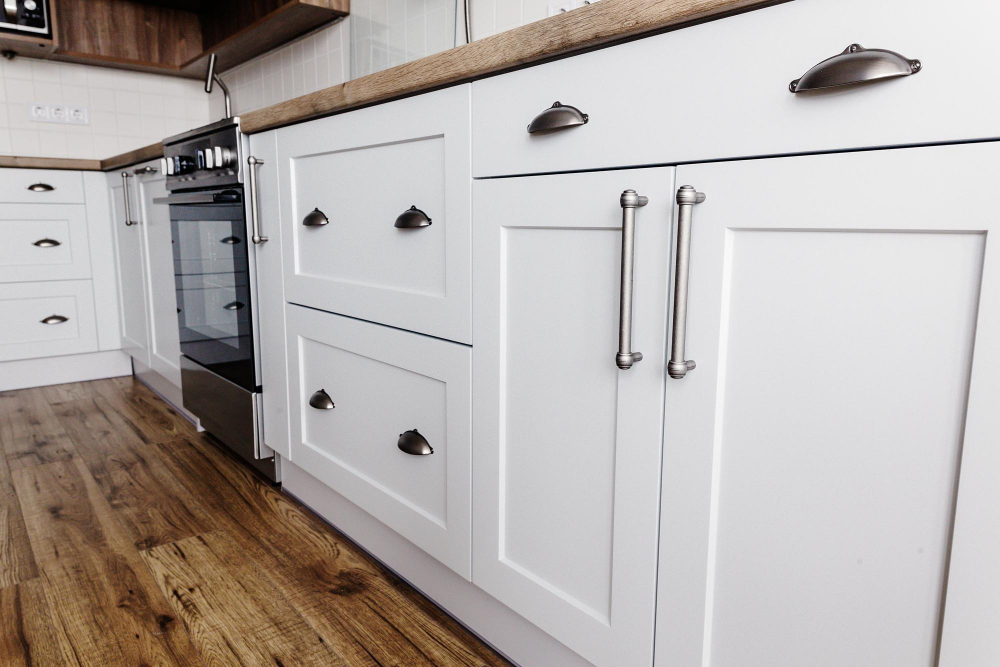
While high-quality materials may come with a higher price tag, they can significantly extend the lifespan of your cabinets. On the other hand, cheaper materials may save you money upfront but could lead to costly repairs or replacements in the long run.
It’s important to note that quality doesn’t always equate to longevity. Some high-end cabinet brands use exotic woods and finishes that look stunning but aren’t necessarily durable enough for everyday use in a busy kitchen.
To ensure both quality and longevity when selecting new kitchen cabinets, it’s crucial to do your research on different brands’ construction methods and material choices. Look for reputable manufacturers who prioritize durability over aesthetics alone.
Material Selection
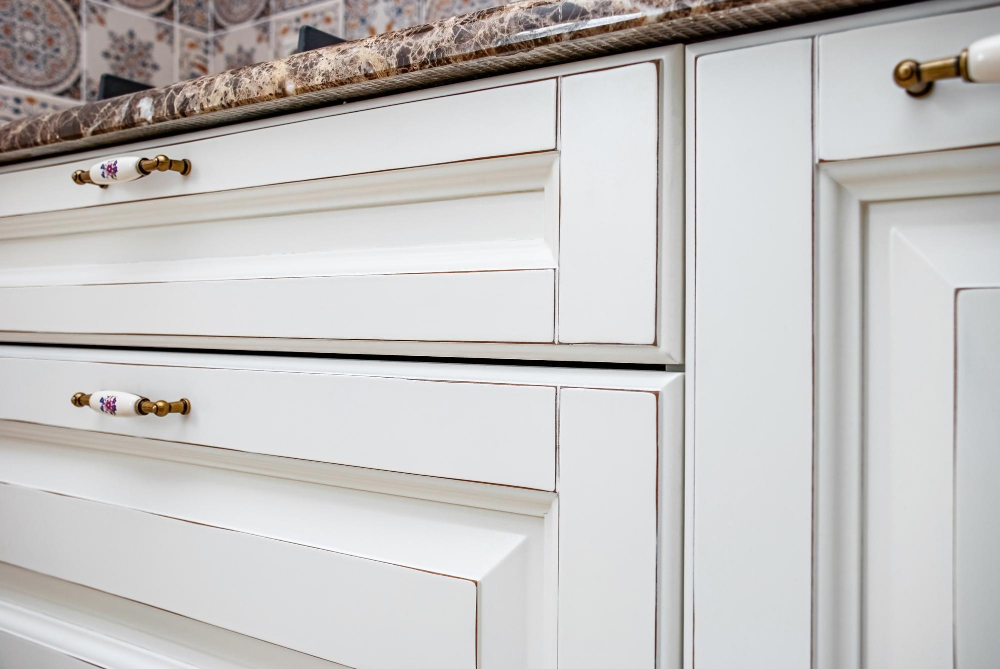
Cabinets made from high-quality materials tend to last longer than those made from low-quality materials. When selecting the material for your kitchen cabinets, it’s essential to consider factors such as durability, resistance to moisture and heat, and ease of maintenance.
Solid wood is one of the most popular cabinet materials due to its durability and timeless appeal. However, solid wood can be expensive compared to other options like MDF (medium-density fiberboard) or particleboard with veneer finishes.
MDF is an affordable option that offers excellent stability against warping or cracking caused by temperature changes or humidity levels in your home. Particleboard with veneer finishes can also provide a budget-friendly alternative but may not be as durable over time.
Proper Installation
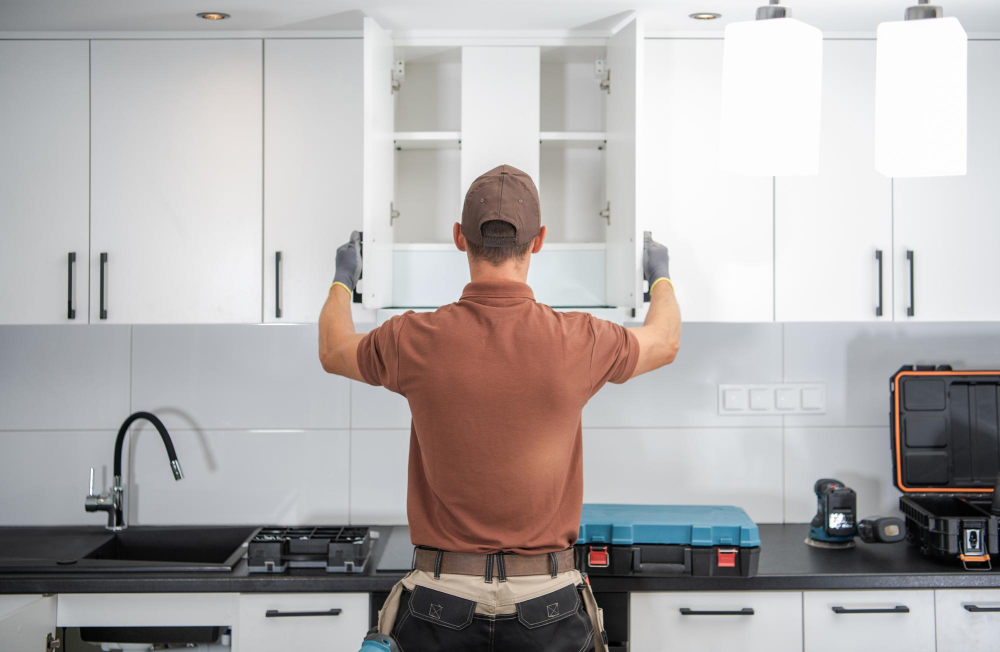
Poorly installed cabinets can lead to structural damage, which may cause them to deteriorate faster than expected. It’s essential to hire an experienced and skilled professional for cabinet installation.
During the installation process, ensure that all screws are tightened correctly and that there are no gaps between the wall and cabinet frames. The installer should also use shims if necessary to level out any uneven surfaces.
It’s important not to overload your cabinets with heavy items as this can cause them to sag or even break over time. Proper weight distribution is key when organizing your kitchen storage space.
Maintenance and Care
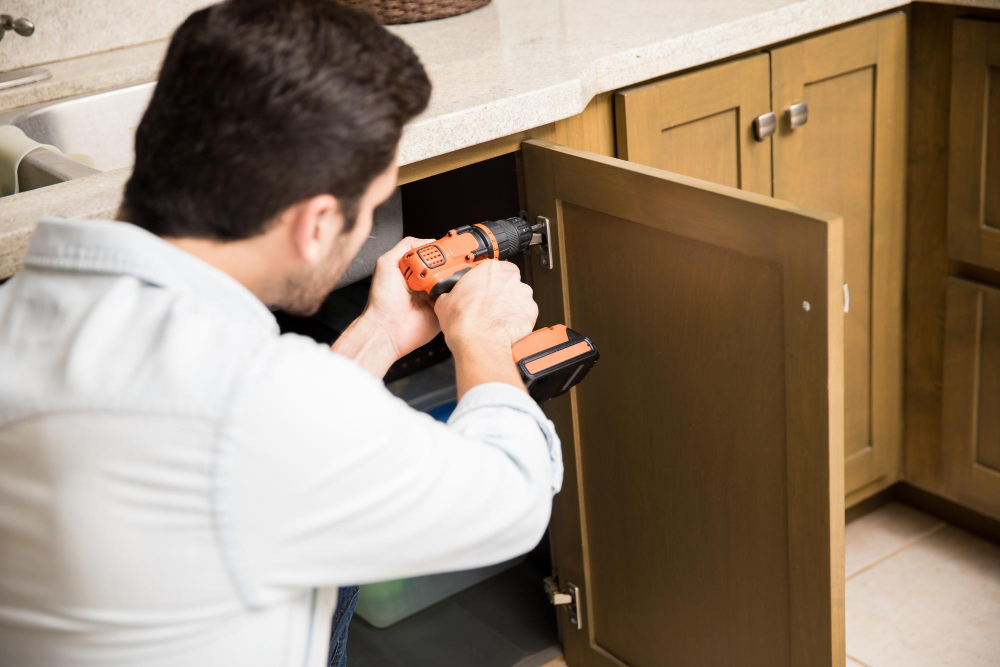
Regular cleaning is crucial to prevent dirt, grease, and grime buildup that can damage the finish or even penetrate into the wood. Use a soft cloth or sponge with mild soap and water solution to wipe down cabinet surfaces regularly.
Avoid using abrasive cleaners, steel wool pads, or harsh chemicals as they can scratch or discolor your cabinets’ surface. Also, be careful not to leave wet cloths on cabinet surfaces for extended periods as this may cause warping.
Another important aspect of maintaining your kitchen cabinets is ensuring proper ventilation in your cooking area. Steam from cooking can cause moisture buildup inside cabinets leading to mold growth which could weaken their structure over time.
Common Cabinet Problems
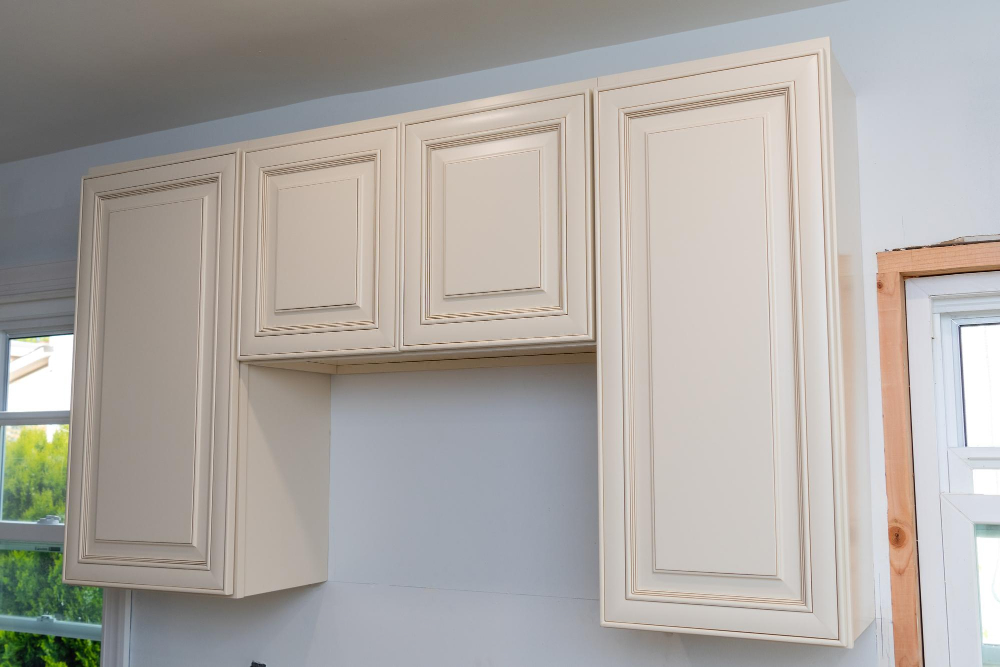
One of the most common issues is warping or cracking due to exposure to moisture. This can happen if your kitchen has high humidity levels or if you spill water on the cabinets frequently.
Another issue that homeowners face is loose hinges or handles, which can make it difficult to open and close cabinet doors properly. If left unaddressed, this problem could cause further damage down the line.
Some people may experience discoloration in their cabinets due to prolonged exposure from sunlight or harsh cleaning chemicals. While these problems may seem minor at first glance, they could indicate more significant underlying issues with your cabinetry’s construction quality.
Environmental Factors
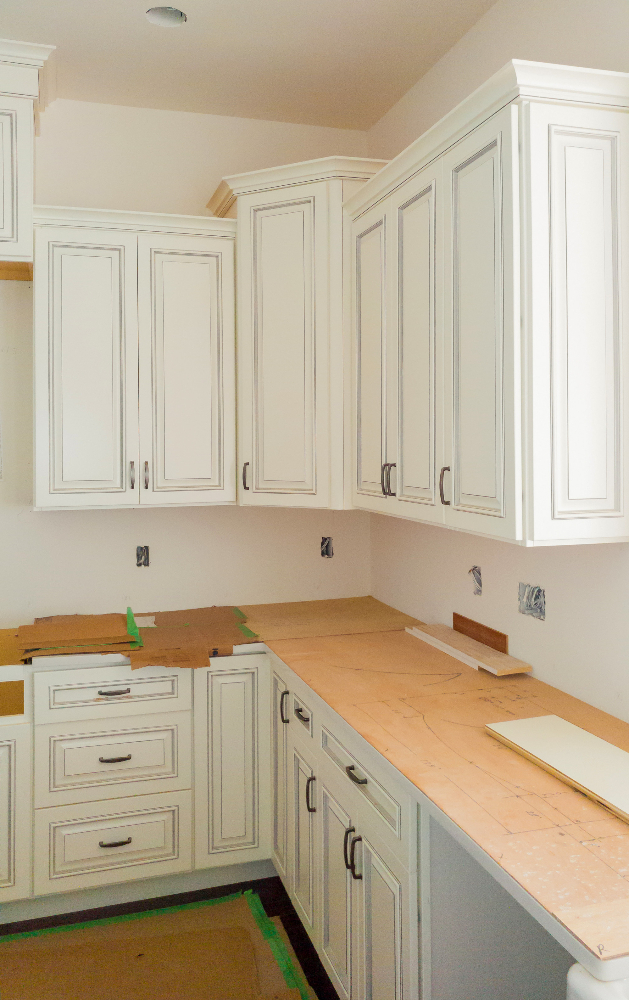
For instance, high humidity levels in your kitchen can cause wood to expand and contract, leading to warping or cracking. Similarly, exposure to direct sunlight may cause fading or discoloration of cabinet finishes over time.
Other environmental factors that affect the longevity of cabinets include temperature fluctuations and air quality. Extreme temperatures can damage cabinet materials while poor air quality due to smoke or cooking fumes may lead to discoloration and a buildup of grime on surfaces.
To extend the life span of your kitchen cabinets despite these environmental challenges, it is essential always to maintain proper ventilation in your home’s cooking area by installing exhaust fans that will help remove excess moisture from the room. You should avoid placing hot pots directly on top of cabinetry surfaces as this could lead them susceptible damage over time.
Factors Affecting Cabinet Lifespan
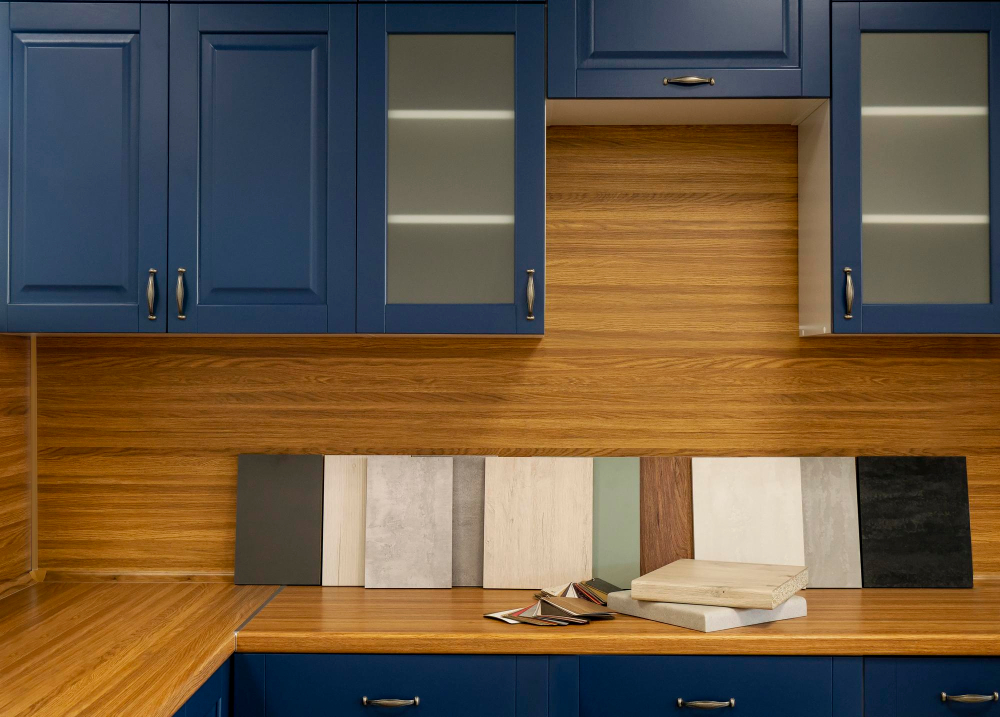
One of the most significant factors is the quality of materials used in their construction. Cabinets made from high-quality materials such as hardwood, plywood, and MDF tend to last longer than those made from particleboard or other low-grade materials.
Another factor that affects cabinet lifespan is proper installation. Poorly installed cabinets can lead to structural problems and premature wear and tear.
Maintenance also plays a crucial role in extending the life of your kitchen cabinets. Regular cleaning with mild soap and water helps prevent dirt buildup that can cause discoloration or damage over time.
Environmental factors such as humidity levels, temperature changes, exposure to sunlight, and air quality also affect cabinet longevity. High humidity levels can cause wood warping while direct sunlight may fade finishes on wooden surfaces.
Material and Construction Quality

Cabinets made from high-quality materials such as hardwood, plywood, or medium-density fiberboard (MDF) tend to last longer than those made from cheaper alternatives like particleboard or laminate. The thickness and durability of the cabinet doors, drawers, and frames also play a crucial role in determining how long they will last.
When selecting your kitchen cabinets’ material type, it’s essential to consider factors such as durability against wear-and-tear caused by daily use. You should also consider environmental factors like humidity levels that can cause warping over time.
In addition to material selection considerations for longevity purposes are construction techniques employed during installation. Properly constructed cabinetry with sturdy joints will hold up better over time than poorly assembled ones with weak connections between parts.
Signs Your Cabinets Need To Be Replaced
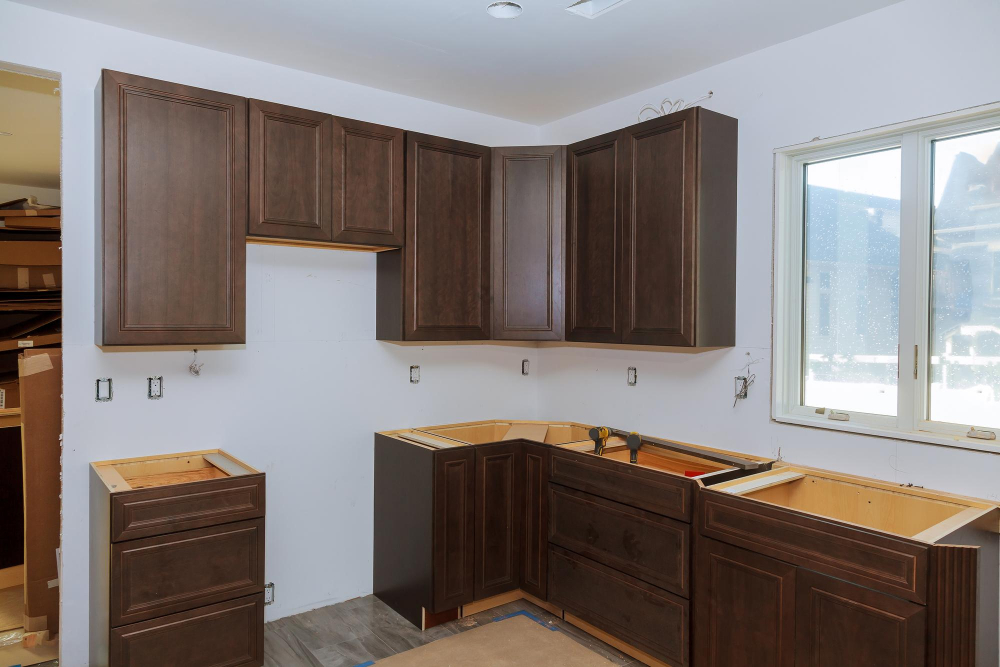
While some issues can be fixed with a simple repair, others may require you to replace the entire cabinet. Here are some common signs that indicate it’s time for new cabinets:
1. Water Damage: If you notice water stains or warping on your cabinet doors or frames, this could be a sign of water damage.
2. Poor Functionality: Cabinets that no longer close properly or have broken hinges can make cooking and cleaning in the kitchen frustrating.
3. “Soft” Structure: When wood becomes soft due to moisture damage, it loses its structural integrity and is more prone to breakage.
4. Mold and Bacteria Infestation: Cabinets located near sinks or dishwashers are at risk for mold growth if they become wet frequently.
Water Damage
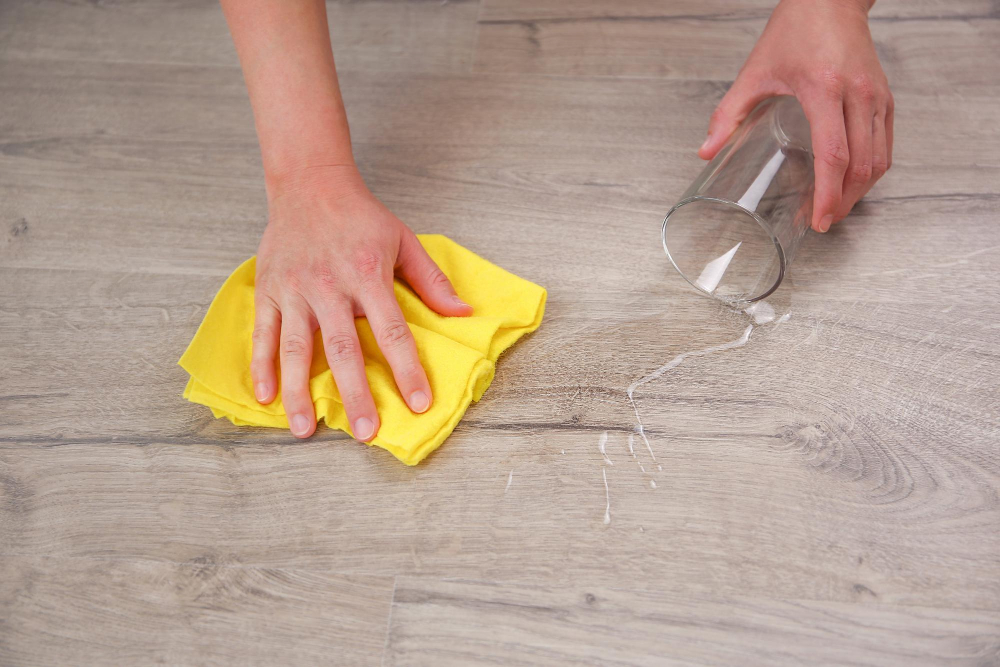
Water can cause warping, swelling, and discoloration in wooden cabinets. If left unaddressed, water damage can lead to mold growth and bacterial infestation which poses a health risk to you and your family.
To prevent water damage from occurring in your kitchen cabinets, it’s essential to ensure that there are no leaks or spills around them. Regularly check for any signs of moisture on or around the cabinet area such as dampness or musty odors.
If you notice any signs of water damage on your kitchen cabinets such as peeling paint or warped wood surfaces, it’s crucial to address them immediately before they worsen. You may need professional help if the extent of the damage is severe.
Poor Functionality
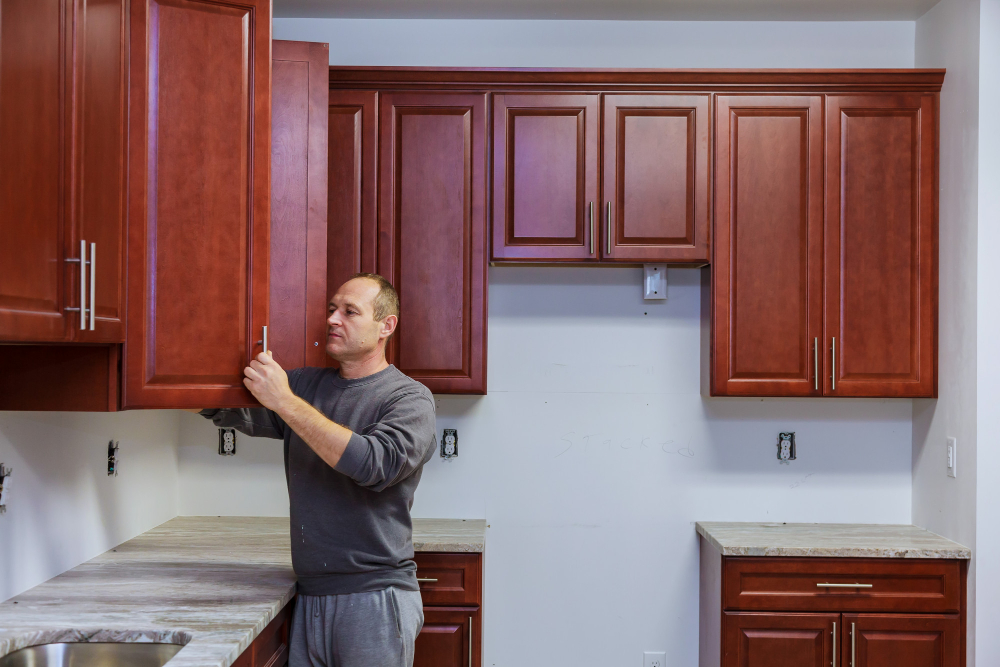
Poor functionality can make it difficult to access items stored in the cabinets or even cause damage to the cabinet structure over time. Common signs of poor functionality include doors that don’t close properly, drawers that stick or fall off their tracks, and shelves that sag under weight.
If you’re experiencing any of these issues with your kitchen cabinets, it’s important to address them as soon as possible. Ignoring poor functionality can lead to further damage and a shorter lifespan for your cabinetry.
In some cases, simple adjustments such as tightening screws or adjusting hinges can solve the problem. However, if the issue is more severe than this – such as warped wood due to water damage – then replacement may be necessary.
“Soft” Structure
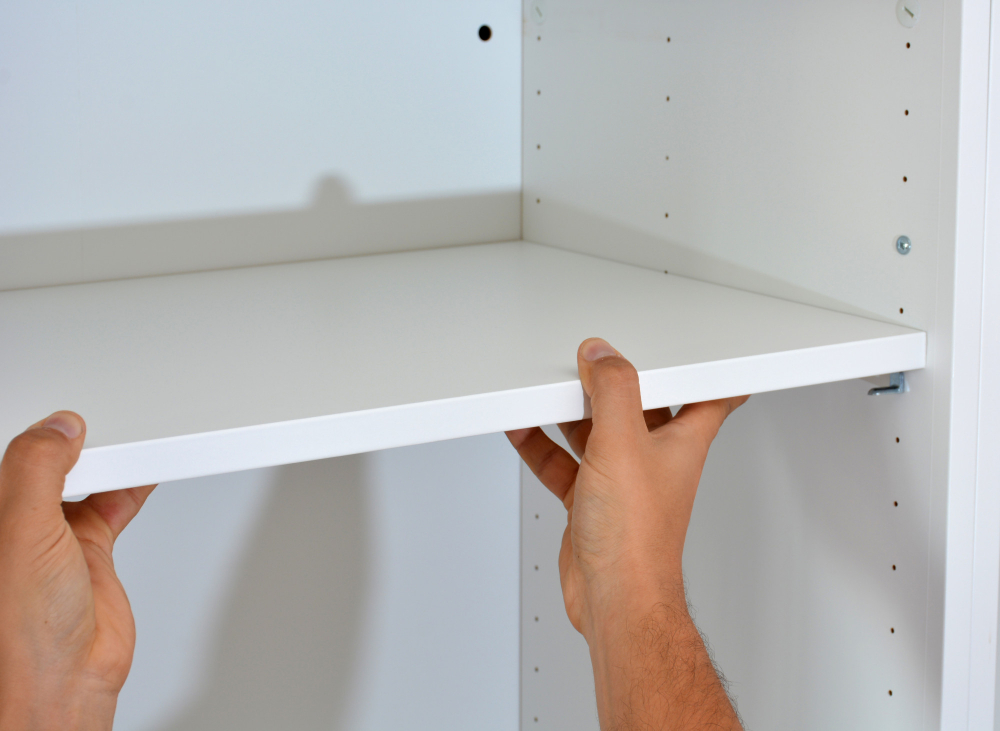
This means that the cabinet’s frame and shelves have become weak, making them unable to support heavy items or withstand regular use. Softness in cabinets can be caused by various factors such as water damage, poor quality materials, or improper installation.
If you notice any soft spots on your kitchen cabinets when pressing down gently with your finger or hand, it may be time to consider replacing them. Softness can also lead to sagging shelves and doors not closing properly.
To prevent this issue from happening in the first place, make sure you choose high-quality materials for construction and proper installation techniques during cabinet installation. Avoid exposing your cabinets to excessive moisture levels which could cause warping over time.
Mold and Bacteria Infestation
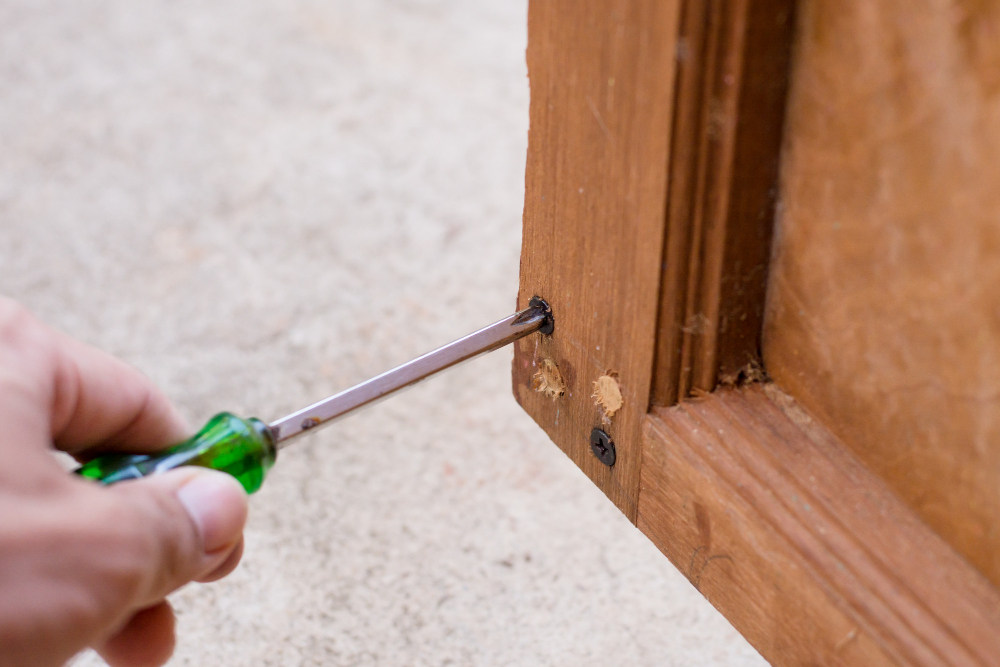
Moisture, humidity, and poor ventilation are some of the factors that contribute to mold growth in cabinets. Mold not only affects the appearance of your cabinets but also poses health risks to you and your family.
Bacteria thrive in warm environments with high moisture levels, making kitchens an ideal breeding ground for them. Food spills or crumbs left behind after cooking provide a food source for bacteria to grow on cabinet surfaces.
To prevent mold and bacterial growth on your kitchen cabinets, it’s essential to maintain proper hygiene practices such as wiping down surfaces regularly with disinfectant cleaners or vinegar solutions. Ensure there is adequate ventilation in the kitchen by opening windows or using exhaust fans when cooking.
If you notice any signs of mold or bacterial infestation such as discoloration on cabinet surfaces or musty odors emanating from them; it’s crucial to address these issues promptly before they worsen. In severe cases where cleaning doesn’t work effectively against molds’ stubbornness; replacing affected parts may be necessary.
Warranty Considerations
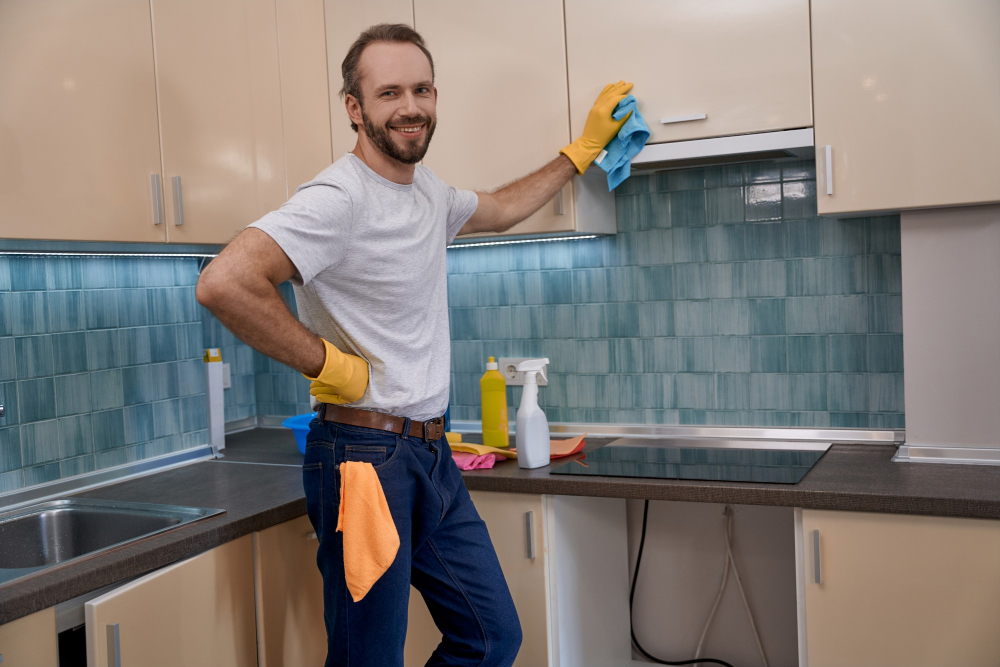
A good warranty can give you peace of mind and protect your investment in case of any defects or issues with your cabinets. Most cabinet manufacturers offer a limited lifetime warranty that covers defects in materials and workmanship for as long as you own the product.
However, it’s important to read through the fine print before making a purchase decision. Some warranties may not cover damages caused by environmental factors such as humidity or water damage, which are common causes of cabinet wear and tear.
Some warranties may require professional installation or specific maintenance procedures to be followed; failure to comply with these requirements could void your warranty coverage.
While a good warranty is an important consideration when purchasing kitchen cabinets, it should not be relied upon solely when determining their lifespan.
Repair or Replace?

If your kitchen cabinets are showing signs of wear and tear, you may be wondering whether to repair or replace them. The decision ultimately depends on the extent of damage and your budget.
If the damage is minor, such as a loose hinge or a scratch on the surface, repairing it might be more cost-effective than replacing it altogether.
However, if there is significant structural damage like water damage that has caused warping or mold growth inside the cabinet structure itself then replacement may be necessary for safety reasons alone.
Another factor to consider when deciding between repair and replacement is how long you plan to stay in your home. If you’re planning on selling soon, investing in new cabinets can increase resale value significantly compared with repairing old ones.
Budget Considerations

If you’re on a tight budget, replacing your entire set of cabinets may not be feasible. However, there are still ways to extend the lifespan of your current cabinets without breaking the bank.
One option is refacing or repainting your existing cabinets instead of replacing them entirely. This can give them a fresh new look and add years to their lifespan at a fraction of the cost.
Another option is upgrading just certain parts or components such as hinges and handles which can improve functionality and appearance while extending cabinet life.
Custom Vs. Stock Cabinets
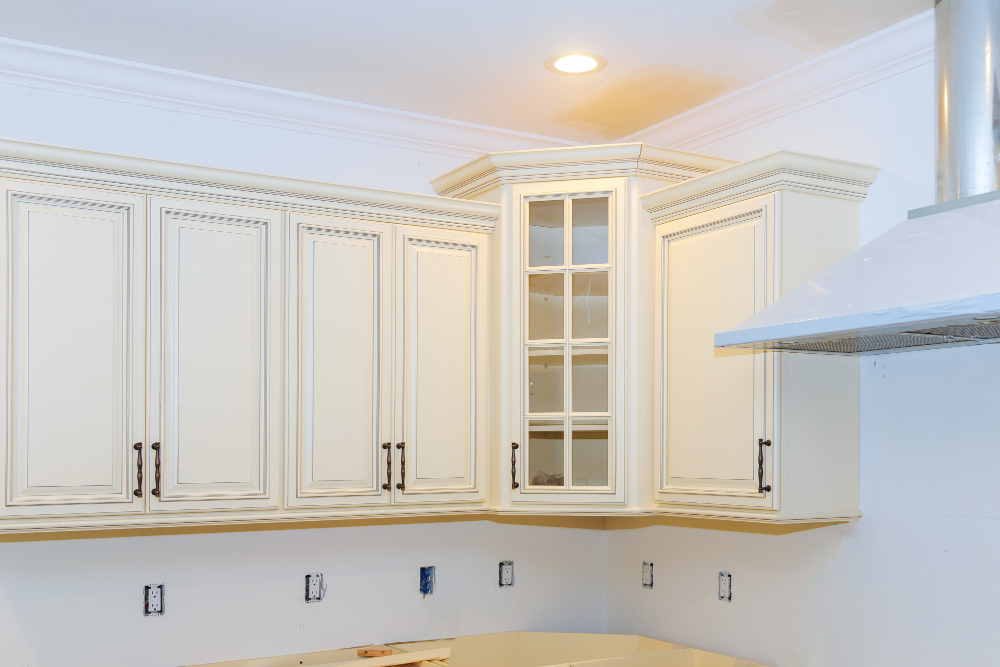
Custom cabinets are made-to-order and designed specifically for your space, while stock cabinets come pre-made in standard sizes and designs.
While custom cabinetry offers more flexibility in terms of design and functionality, they can be significantly more expensive than their stock counterparts. On the other hand, stock cabinetry is a cost-effective option that can still provide a stylish look for your kitchen.
Ultimately, the decision between custom or stock will depend on your budget as well as your specific needs and preferences. If you have unique requirements such as non-standard dimensions or unusual storage needs then going with customized solutions may be necessary.
FAQ
How often do you replace kitchen cabinets?
Kitchen cabinets should typically be replaced every 10 years due to frequent use, despite their potential lifespan of 15-50 years.
What is the life expectancy of wood cabinets?
The life expectancy of wood cabinets, specifically those made from solid hardwood, can be up to 50 years or more, depending on the quality of materials used in their production.
What type of cabinets last the longest?
The most durable cabinets, lasting the longest, are made from solid hardwood like cherry and maple.
What factors influence the durability of kitchen cabinets?
Durability of kitchen cabinets is influenced by factors such as material quality, construction techniques, hardware, installation, and environmental conditions.
How can proper maintenance extend the lifespan of kitchen cabinets?
Proper maintenance extends the lifespan of kitchen cabinets by preventing damage, reducing wear and tear, and ensuring cleanliness and functionality.
Are there noticeable differences in longevity between custom-built and stock kitchen cabinets?
“Custom-built kitchen cabinets tend to have a longer lifespan than stock cabinets due to their higher quality materials and craftsmanship.”




